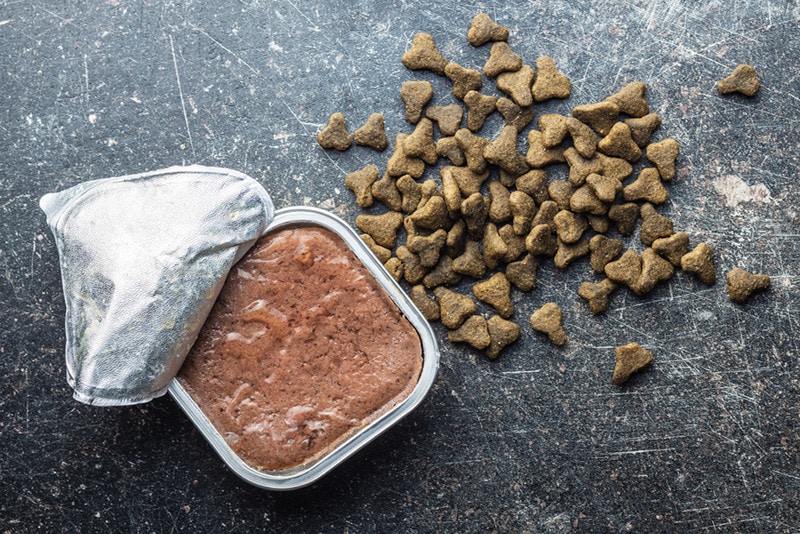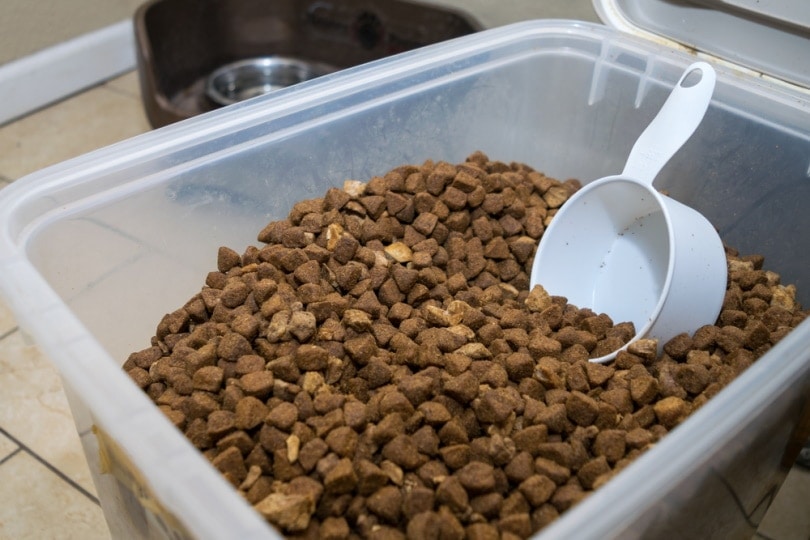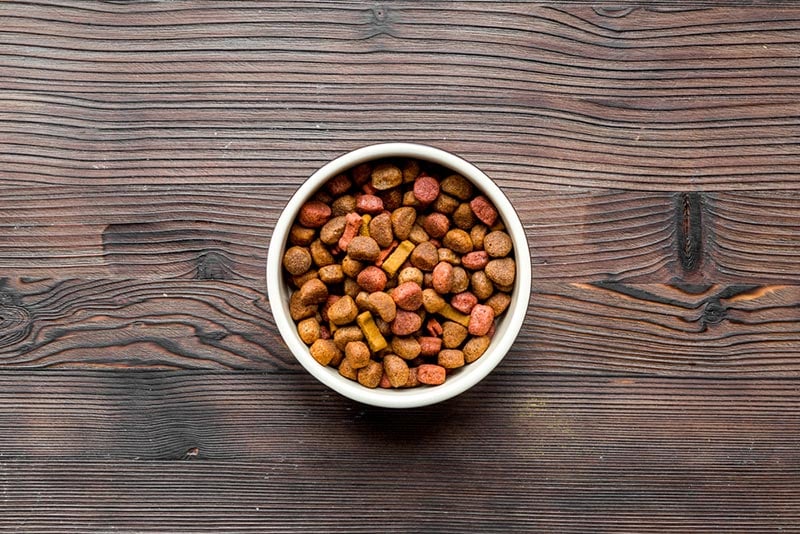TBHQ In Dog Food: Vet-Reviewed Safety & Controversy Facts
By Hanh Duong
Updated on

If you’ve ever read food labels, you may have encountered some things you do not recognize, or even pronounce! One of them could be tertiary butylhydroquinone.
Tertiary butylhydroquinone, often known as TBHQ, is a preservative that is sometimes added to dog food to extend its shelf life. It functions as an antioxidant, but in contrast to the beneficial antioxidants present in fruits and vegetables, this antioxidant has a bad reputation. Let’s explore its safety and look at it from several angles.
What Is TBHQ?
Like many other food additives, TBHQ is used to increase the shelf life of products and avoid rancidity. It is a crystalline substance with a light color and a faint aroma. Food manufacturers benefit from the antioxidant effects of TBHQ, which helps prevent iron-containing foods from discoloring.
Propyl gallate, butylated hydroxytoluene (BHT), and butylated hydroxyanisole (BHA) are a few additives that are often employed with it.

How Is TBHQ Used?
The compound TBHQ can be found in many processed products, including noodles, snack crackers, fast food, and of course, some dog foods. As mentioned earlier, it’s mostly used as a preservative to extend the shelf life of food—a synthetic food antioxidant to prevent oils and fats from oxidative deterioration.
Which additives to food are acceptable for American consumers is decided by the Food and Drug Administration (FDA), so they place a cap on the amount of a specific ingredient that may be used:
- When there is proof that excessive amounts could be dangerous.
- If there is generally a lack of proof of safety.
TBHQ cannot make up more than 0.02 percent of the oils and fats in food. While this does not necessarily mean that amounts greater than 0.02 percent are hazardous, it does show that higher safety thresholds have not been established.
Benefits of TBHQ
Apart from the preservative effects, TBHQ has been shown to have some antimicrobial effects. Its inclusion in a range of foods reduced the growth of a number of pathogenic bacteria, including Staphylococcus aureus, Escherichia coli, Salmonella spp., Klebsiella pneumoniae, and Pseudomonas aeruginosa.
Potential Side Effects of TBHQ
The Food and Drug Administration permits the presence of TBHQ in food in concentrations up to 0.02% of all oils and fats. Based on the limitations of human trials, this is essentially an arbitrary figure based on experimental data on rats, mice and dogs.
Scientific papers, research and reviews all indicate that the use of TBHQ at the approved levels, shows no harmful effects when used in rats, dogs, and humans, with negligible residual amounts found in tissues after ingestion. At high doses for prolonged periods, it can increase the risks of developing certain tumors by stimulating potentially carcinogenic inflammatory pathways.

Genuine Concern or Misguided Scaremongering?
An internet search on the safety of TBHQ will bring up numerous articles, all referring to the same quote: “Consuming high doses (between 1 and 4 grams) of TBHQ can cause nausea, delirium, collapse, tinnitus (ringing in the ears), and vomiting. There are also suggestions that it may lead to hyperactivity in children as well as asthma, rhinitis and dermatitis” made by Shona Botes.1
This is from an article written by a blogger in 2011, on a website called Natural News; Truth Matters. There is no scientific data to support this assertion, and the writer has no scientific qualifications. The side effects listed are in relation to direct exposure to the chemical compound itself, in a laboratory setting, not to its use as a food additive.
In safety studies performed by the European Food Safety Authority, doses of 72mg/kg of TBHQ produced no adverse effects in dogs, which are the most sensitive species to this chemical compound. In order to provide a 100 fold safety margin, the maximum allowable level in dog food is 0.7mg/kg of body weight per day.2
What this means is that the maximum levels set for including TBHQ in food for human (and canine) consumption is approximately 100 times lower than it could be, and still not cause detrimental effects.
Frequently Asked Questions (FAQs)
Is TBHQ Safe for Dogs?
Yes. In fact, not including preservatives such as TBHQ in commercial dog food can increase the risk of bacterial growth and rancidity, and subsequently, food poisoning.
Does Dry Dog Food Have Preservatives?
Most dry dog food contains preservatives. It is necessary to prevent food from spoiling unless you prepare your dog’s food from scratch for each meal and feed them immediately.
What Preservatives Should Be Avoided?
Earlier we mentioned some preservatives that are often included alongside TBHQ; Propyl gallate, BHT and BHA. These are some of the worst offenders in terms of potential and scientifically proven side effects, including risk of cancer.
Others to avoid are: Sodium Nitrite, Sodium Nitrate, Potassium Nitrate, Sodium Benzoate and Hexamethylene Tetramine. Be aware that these will often appear as the infamous ‘E’ numbers on ingredients list. Those listed above may also be seen as E 250, E 251, E 252, E 211, and E 239.

Final Thoughts
Tertiary butylhydroquinone, better known as TBHQ, is a fat preservative, used to extend the shelf life of dog food. Compared with some other commonly used preservatives, it appears to be quite safe, for dogs and humans alike.
As is always the case when consuming products requiring the addition of artificial preservatives, we should be mindful of what those products are and what other, potentially harmful chemicals are also being included.
Featured Image Credit: M Burke, Unsplash














